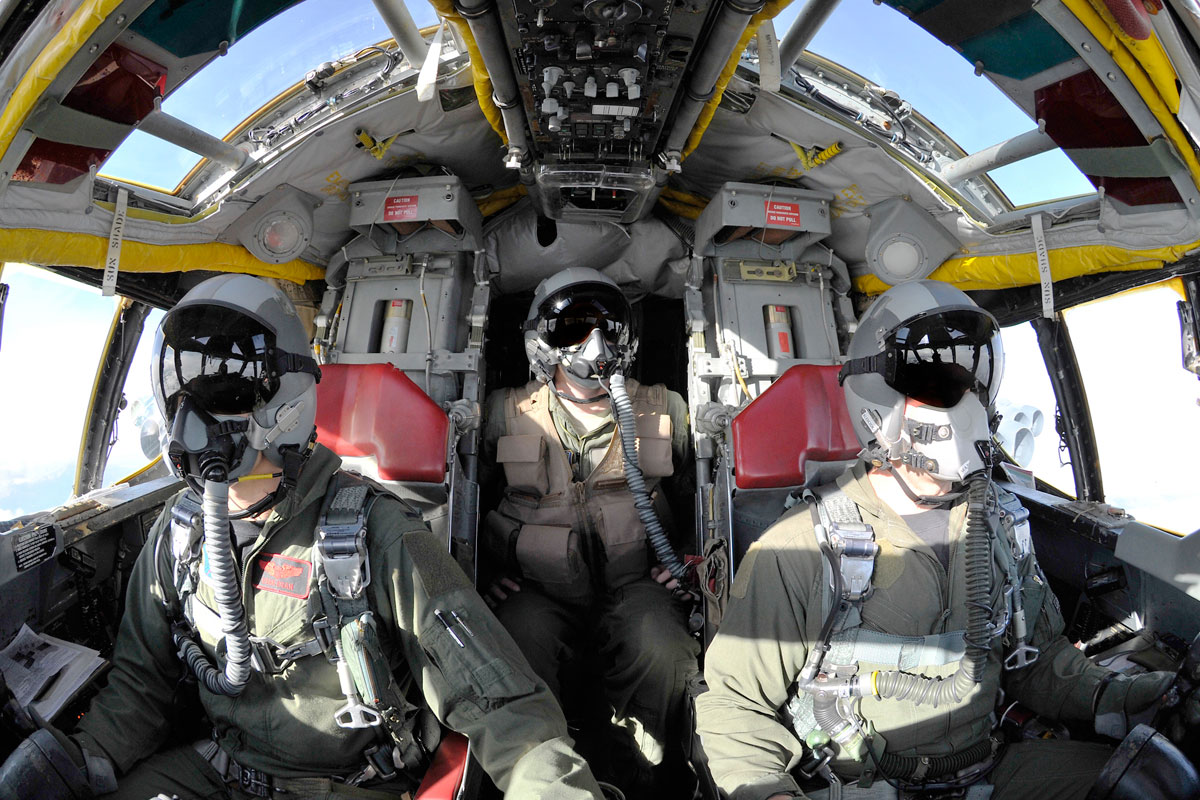

Just behind this sits the Actuating Levers for opening the Bomb Doors and for Emergency Salvo of the Bombs. To the Bombardier’s left is the Bomb Release Panel, controlling the release sequence of the Bombs and below it, the Intervalometer controls the timing of the Bomb Release. Below the Turret is the Norden Bomb-Sight looking through the Optical Glass Panel. It is entered via 2 Doors the Gunner is seated with his feet resting in the Turret Bowl. The Consolidated Turret is a hydraulically powered unit, which is plumbed into the Aircraft’s main Hydraulic System, while the Emerson type A-15 is an Electrically operated Turret taking its power from the main 24-volt system. The Bombardier also manned the Nose Turret, usually either a Consolidated or Emerson Type.

This Section, between the Nose & Station 1.0 contains the working area for the Bombardier & Navigator. The design ensures that Stresses are evenly dispersed throughout the Airframe rather than being concentrated at a few points.
VOLTAGE BOMBER CREW SKIN
The Alclad aluminium skin is attached to the Stringers & Stations by rivets to provide the stressed skin element of the Structure. There are 5 Structural Bulkheads, – forward of the Flight Deck, aft of the Flight Deck, between the 2 Bomb-Bays, aft of the Rear Bomb-Bay and at the end of the Rear Compartment just forward of the Rear Turret these serve to separate different Fuselage Compartments as well as to add strength to the Structure. Compartments are separated by stations with whole numbers with intermediate stations numbered 0.1, 0.2 etc. Numbering is from 0 which is a Datum point in the extreme Nose to the Datum point 10.0 at the Tail. Circumferential Frames or Stations are of aluminium lipped-channel and are notched to pass over the Stringers and the spacing between stations is approximately 1ft 6in. Heavy Section Longerons carry Loads through the Bomb Bays and other Fuselage openings. Running longitudinally are rolled aluminium Z-section Stringers spaced approximately 6in apart, but with reduced spacing where greater strength is required in areas such as the Bomb Bays. The deep oval Fuselage is of all-metal, stressed skin and is defined as a semi-monocoque design. The description that follows is typical for a late production B-24J Series, any significant variations with other versions are highlighted. The many different versions of the B-24 varied a great deal in the detail of their internal equipment. The clever design of the B-24s deep Fuselage & Twin Bomb Bays meant extra Fuel could be carried in one Bay and a useful load of Bombs in the other, giving the Aircraft exceptional range for its time. When this Wing was married to the box-like Liberator Fuselage and successive versions were required to carry ever increasing weights of Military Equipment, the performance promise of the early design became a distant memory. The most radical feature was perhaps the efficient, high aspect ratio Davis Wing, which promised to bestow the Liberator with a low-drag, high-lift performance. The Liberator design incorporated advances in Aerodynamics & Technology that were some 5 years more advanced than the Flying Fortress. 30 caliber (7.62mm) Browning M1919 Machine Guns. The Navigator & Bombardier, who could also double as a Nose or ‘ Wiggly Ear’ Gunner (Guns mounted in the Sides of the Aircraft Nose), sat in the Nose, fronted on the pre- B-24H models with a well-framed “Greenhouse” Nose with some 24 glazed panels in total, with 2 flexible Ball-mounts built into it for forward defensive Firepower using. The Pilot & Co-pilot sat alongside each other in a well-glazed Cockpit. The Liberator carried a Crew of up to 10. The B-24 was used in WW2 by every Branch of the American Armed Forces, as well as by several Allied Air Forces & Navies, attaining a distinguished War Record with its Operations in the Western European, Pacific, Mediterranean & China-Burma-India Theatres and in Anti-Submarine Warfare.


It was known within the Company as the Model 32, and some initial Models were laid down as Export Models designated as various LB-30′s, in the Land Bomber design category. The Consolidated B-24 Liberator is an American Heavy Bomber, designed by Consolidated Aircraft of San Diego, California. 111 OTU B24 Liberators at Windsor Field, Nassau, LO is B.III BZ762 and MA is GR.V BZ810


 0 kommentar(er)
0 kommentar(er)
